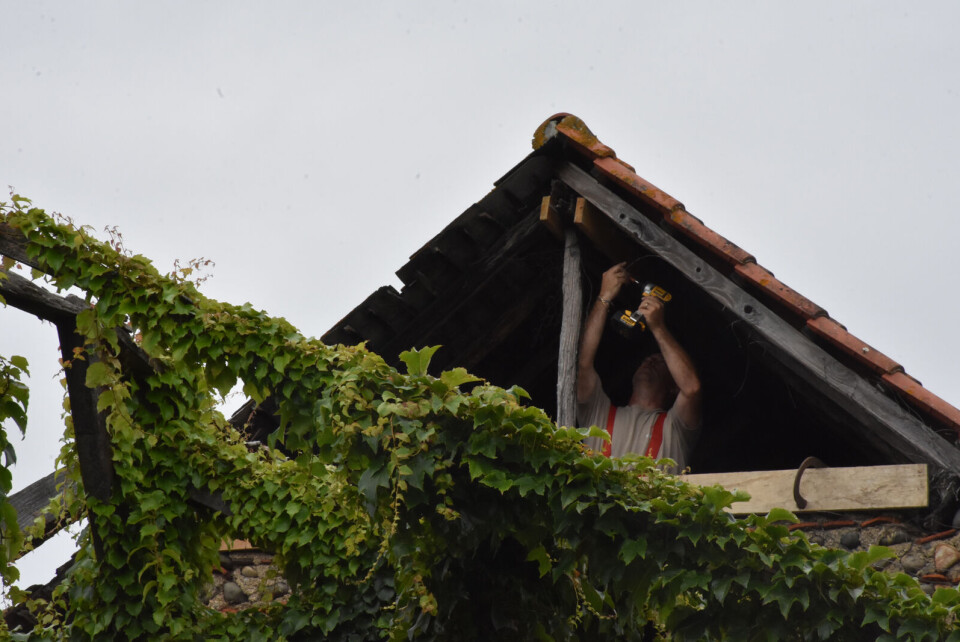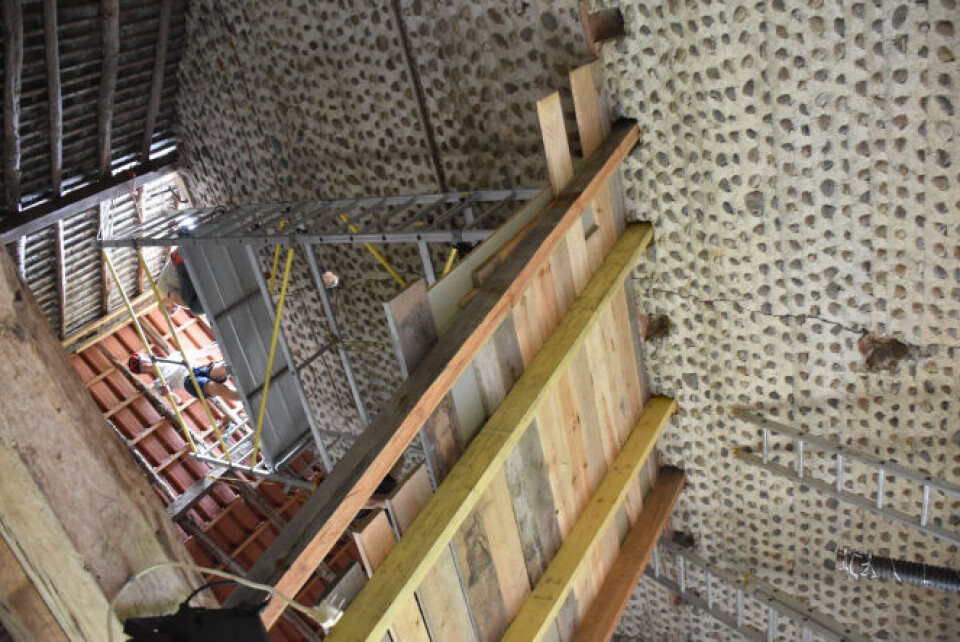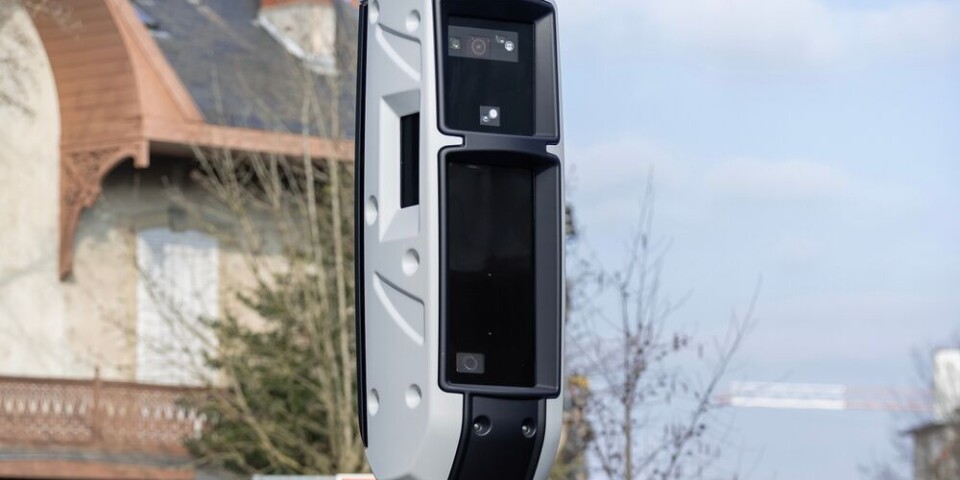-
How recycling old sand for restoration work looks quintessentially French
Columnist Nick Inman reveals an environmentally-friendly way to disguise new building work in his old French farmhouse
-
How much do energy efficiency renovations cost in France?
Owners will want to ensure properties improve by at least two DPE ratings, increasing the work and cost needed
-
How I found a creative outlet for my French barn
Columnist Nick Inman discovered that turning it into a exhibition space took more work than he predicted
French farmhouse renovation: Installing a gable window
Faced with a gaping hole in his French barn, Nick Inman decides to install a gable window. Only problem? It is 7.5m from the floor

At the southern end of our barn there is a large triangular opening between the roof and the top of the wall, through which rain is periodically blown. This is a problem as the barn is to be the venue for my daughter’s wedding party.
A century and a half ago, the builders of the barn left this opening for a reason. The barn was used to dry and store tobacco and other crops: a good draught of air was necessary for this. The only thing that would get wet would be the wine press.
The space was intersected by a thin post (to hold the roof up), covered with wire netting to keep pigeons out. Otherwise it was left completely open.
'I have long looked up at this unwanted, un-weatherproofed gap and wondered what to do about it'
It was clear I would not get much done by myself, and so I prepared the project and waited until I had two or three helpers who could give me a spare Sunday.
The problem with this gable window hole is that it is 7.5m from the floor. It is too high to reach with a fully extended ladder, and too high even for my scaffolding. The first challenge, then, was access.
The answer was improvised carpentry. The barn has an incomplete upper floor but we were able to roughly extend this using some stout 4m lengths of 63mm x 150mm construction timber.
On to these we screwed all the thick planks I could find around my property, even dismantling part of a shelf in the workshop.
We thus made a platform just wide enough to accommodate the scaffolding, which we fixed carefully in place.

We found we needed two people at the top of the scaffolding – a task which fell to me and a friend who pilots microlight aircraft and knows what he is doing at altitude.
The bridgegroom was positioned on the wooden platform below, and the bride (with no head for heights) at ground level. They passed tools and materials up to us via a rope and bucket as needed.
Our first job was to make a windowsill by clamping boards both inside and outside and filling these with an unbelievable amount of mortar hauled up in buckets. At the same time we strengthened the central post, which had deteriorated over time, and checked that the other timbers were sound.
We let the mortar set while we had lunch and then returned to figure out how we would make two window frames, one on either side of the central post.
I had already bought the biggest piece of synthetic glass (verre synthétique) I could find locally: 1m x 2m, and 4mm thick (2.5mm is cheaper but not as resistant to the wind).
Out of this I was able to measure two triangular window panes that would be just a few centimetres short of what we required, meaning we would have to make the two hypotenuses broader than the base and side.
We cut the plastic sheet into shape with a jigsaw and an enormous amount of care. Then we carefully drilled 4mm holes around the edges. Synthetic glass must be fixed with screws that are flat, not tapered, at the head.
The windows fitted, all we had to do was dismantle the scaffolding, starting at the top and working downwards with the greatest of care.
The result may not draw the eye of anyone standing at ground level – glazed or open it looks much the same – but if the wedding falls on a windy, rainy day I know our guests are not going to be drenched.
Related stories
A father and son’s dream to build a Gothic masterpiece in France
‘Hobbit’ housing grows with trend in France for low-impact living
























